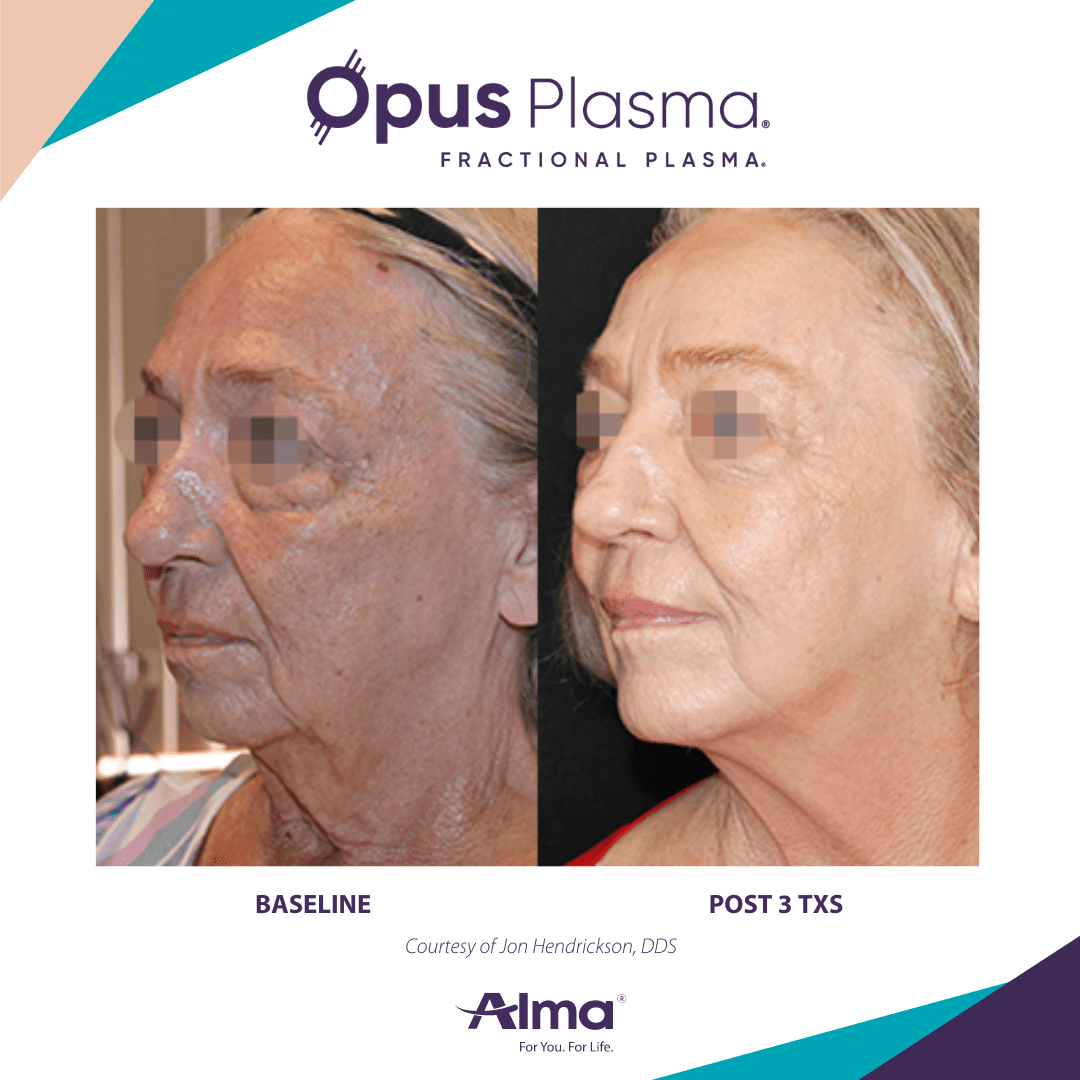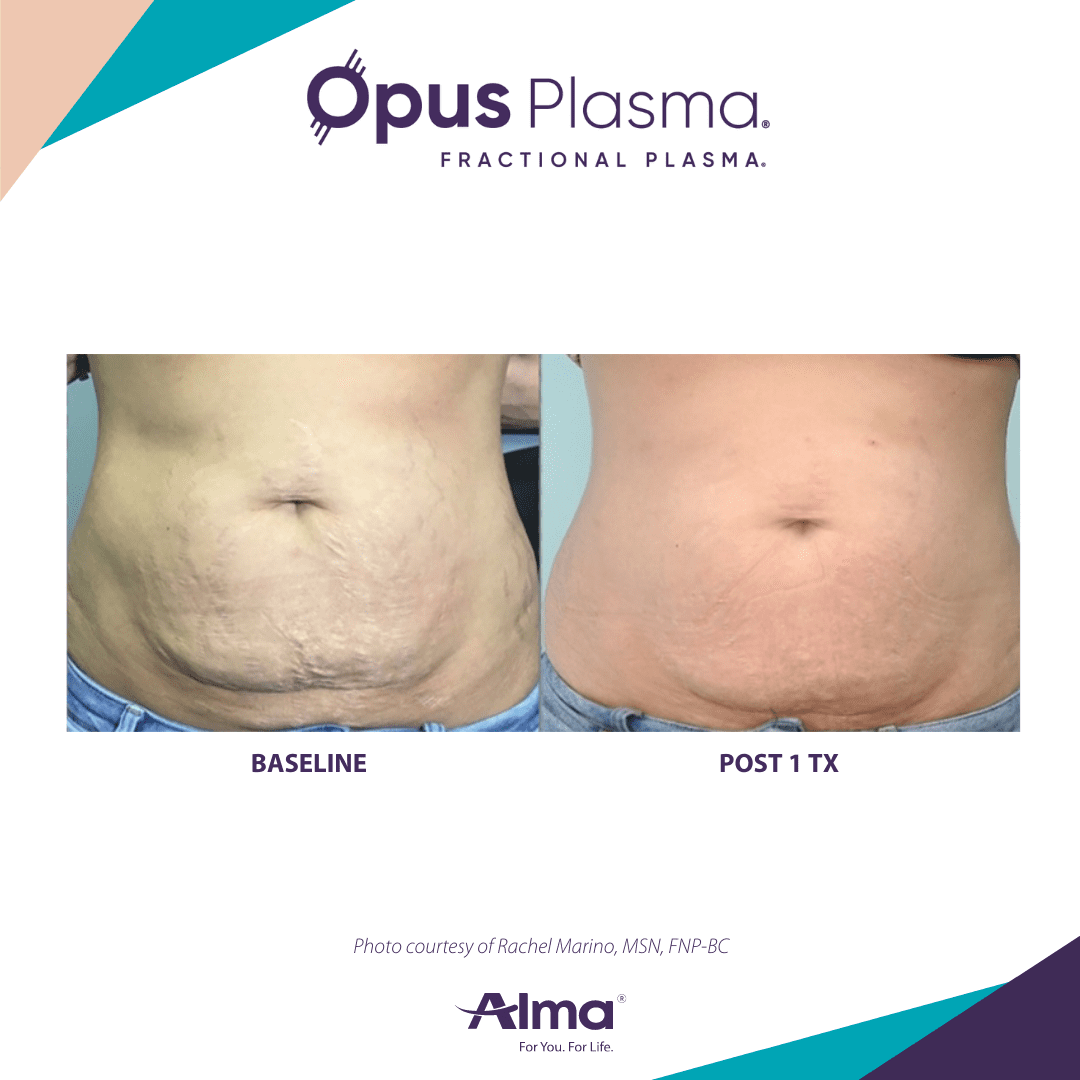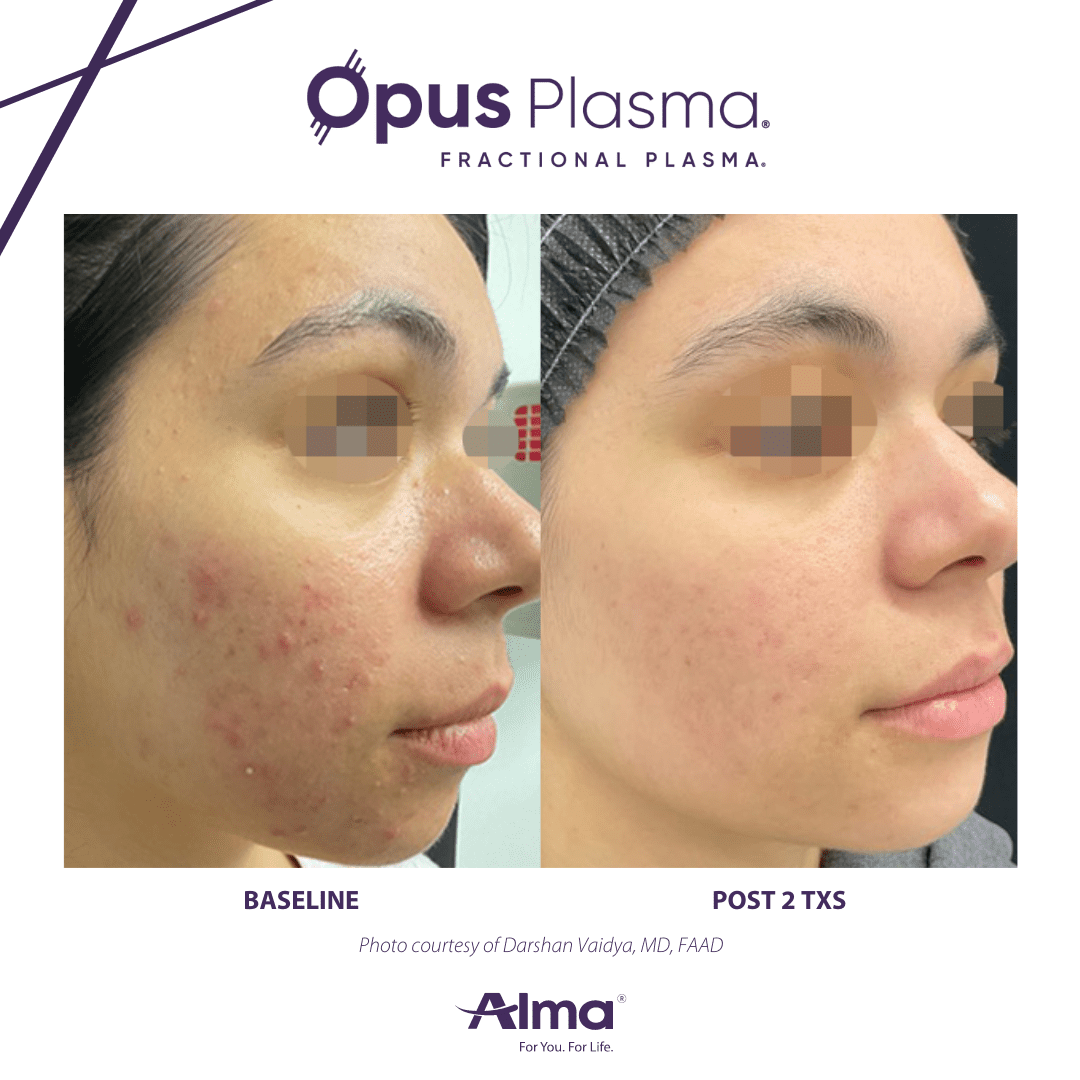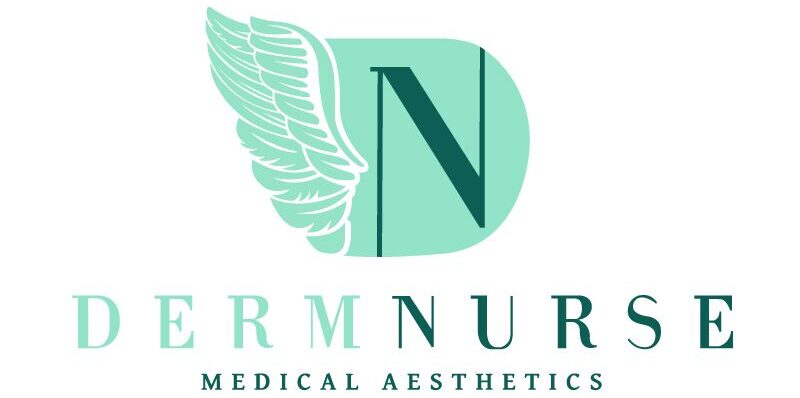OPUS PLASMA TREATMENT
Unveiling the Science of Opus by Alma
The Next Generation of Skin Rejuvenation Is Here
Opus by Alma is a state-of-the-art plasma device, reshaping the future of skin treatments. By utilizing cutting-edge plasma technology, it offers a non-invasive approach to revitalizing, resurfacing, and tightening the skin, bringing back that youthful glow everyone desires.The Opus is an advanced aesthetic system that leverages the power of PLASMA technology for skin treatments. Plasma is often dubbed the “fourth state of matter” (after solid, liquid, and gas). The plasma is created using radiofrequency energy to ionize nitrogen gas particles in the air between the device’s applicator tip and the client’s skin. When applied, plasma energy delicately heats the skin’s layers, both external and internal. This stimulates the skin to produce more collagen and elastin – two key proteins for maintaining skin’s youthful and firm appearance.








"The Transformative Benefits of Opus by Alma"
Non-invasive & Minimal Downtime: Gone are the days of post-treatment redness and weeks of recovery. With Opus by Alma, you can step out with confidence shortly after your session.
For All Skin Types: Our technology caters to every skin type, ensuring everyone can experience the magic of revitalized skin.
Long-lasting Results: It's not just about instant glow but also lasting results. Experience smoother, firmer skin for months after your treatment.
Stimulates Natural Processes: Opus by Alma stimulates your skin's natural collagen and elastin production, ensuring the results are not just beautiful but also natural looking.
Here's a step-by-step of how Opus by Alma works:
Creation of Plasma: When the device is activated, radiofrequency energy interacts with the air, turning it into plasma energy.
Micro-Thermal Zones: This plasma energy is then channeled in a controlled manner to the skin. It creates micro-thermal zones (tiny, controlled areas of heat damage) but without directly touching the skin. This controlled damage stimulates the body's natural healing processes.
Stimulation of Collagen and Elastin: The heat generated in the micro-thermal zones stimulates the production of collagen and elastin. These are key proteins that provide the skin with structure, elasticity, and firmness. The types of collagen stimulated include type I, type III and type IV. Type I Collagen: This is the most abundant collagen in our body and provides structure to skin, bones, tendons, fibrous cartilage, connective tissue, and teeth. Type III Collagen: Often found alongside Type I, and is especially significant in the skin as it provides elasticity and firmness. Type IV Collagen: Provides structural support to the skins basement membrane by offeringa foundational layer upon which skin cells can adhere and thrive. This aids in maintaining the skin's overall structure and integrity. Elastin is a critical protein found in the skin, as well as other tissues in the body. As its name suggests, elastin provides elasticity, allowing tissues to "snap back" to their original shape after being stretched or contracted. In the skin, this protein plays a vital role in maintaining skin's resilience, suppleness, and youthful appearance.
Apart from stimulating collagen and elastin production, the plasma energy also resurfaces the skin, reducing the appearance of scars, wrinkles, and improving overall skin texture.
Minimal Damage: Due to its precision and the nature of plasma energy, the surrounding tissues are not affected, ensuring minimal downtime post-treatment.
Customized Treatment: Devices like Opus come with different settings and applicator tips, allowing the practitioner to customize the treatment based on the patient's skin type, concerns, and desired outcomes. This includes the focus tip and special "Colibre" tip designed specifically for delicate areas like around the eyes.
Post-Treatment Recovery: After the treatment, the micro-thermal zones begin to heal, resulting in skin that's rejuvenated, firmer, and smoother.
Opus by Alma offers a non-invasive, effective method for skin rejuvenation. Like with all cosmetic treatments, it's crucial for potential patients to consult with a qualified practitioner to understand the benefits, potential risks, and to determine if they're a good candidate for the procedure.
A CO2 laser effect but without the pain and downtime
How is The Opus similar and different two CO2 laser?
Both the Opus plasma technology and CO2 ablative laser treatments are advanced skin rejuvenation procedures, but they operate on different principles and have varying degrees of invasiveness, benefits, and side effects. Here's a comparison:
Similarities:
Skin Resurfacing: Both treatments can be used for skin resurfacing, which can help reduce the appearance of fine lines, wrinkles, scars, and improve overall skin texture.
Collagen Stimulation: Each method stimulates collagen production in the skin, which aids in rejuvenation and promotes a more youthful appearance.
Treatment of Various Conditions: Both can be used to address a range of skin conditions, including acne scars, sun damage, age spots, and uneven skin tone.
Downtime: Both treatments typically require some downtime for recovery, during which the skin may be red, swollen, and sensitive.
Differences:
Mechanism of Action:
Opus: Uses plasma technology, where radiofrequency energy interacts with the air to create plasma. This plasma is then delivered to the skin to create micro-injury zones, stimulating the body's natural healing processes.
CO2 Laser: Works by emitting a wavelength of light that is absorbed by water in the skin. This causes vaporization of the skin cells, creating controlled damage that prompts skin regeneration.
Degree of Invasiveness:
Opus: Considered less invasive than CO2 ablative treatments. The Opus device doesn't directly touch the skin, resulting in more superficial treatment and generally quicker recovery times.
CO2 Laser: It's ablative, meaning it vaporizes tissue. It can penetrate deeper into the skin and is considered more invasive. Recovery might take longer, but results can also be more dramatic after just one session.
Risk and Side Effects:
Opus: Since it's less invasive, there's typically a lower risk of complications such as scarring, hyperpigmentation, or infections compared to CO2 laser treatments.
CO2 Laser: Due to its invasive nature, there's a higher potential for side effects. These might include prolonged redness, swelling, scarring, or changes in pigmentation.
Downtime and Recovery:
Opus: Typically has a shorter downtime compared to CO2 ablative lasers. Patients might experience redness and mild swelling for a few days.
CO2 Laser: Recovery can be more extensive, often involving noticeable redness, swelling, and peeling. It might take one to two weeks for initial recovery and longer for complete healing.
Number of Sessions Required:
Opus: Depending on the individual's skin condition and desired results, multiple sessions might be required.
CO2 Laser: Due to its intensity, fewer sessions might be needed to achieve desired results. However, this depends on the individual, risk factors, pain and downtime tolerance, and the condition being treated.
The Opus (by Alma Lasers) and Fractora (by InMode) are both advanced aesthetic treatments that are designed to improve skin quality and address various skin concerns. While they share similarities in their aims and some of their methods, they also have differences in their mechanisms and results.
Similarities:
Treatment Goals: Both Opus and Fractora are designed for skin rejuvenation. They aim to improve skin tone, texture, and overall appearance. Common treatment goals include reducing wrinkles, addressing acne scars, improving skin laxity, and evening out skin discoloration.
Skin Resurfacing: Both treatments use a form of skin resurfacing to induce controlled damage to the skin, prompting the body's natural healing process to boost collagen production.
Minimally Invasive: Both treatments are minimally invasive, which means they penetrate the skin but do so without the need for incisions or extensive downtime like traditional surgical procedures.
Micro-Needling: Fractora, in particular, uses a combination of microneedling with radiofrequency energy. Microneedling is a technique where tiny needles are used to create micro-injuries to the skin, which can boost collagen production.
Differences:
Mechanism of Action:
Opus: Uses plasma technology. It creates plasma by combining radiofrequency energy with charged atmospheric ions. This plasma is then delivered to the skin to create micro-injury zones.
Fractora: Uses fractionated radiofrequency energy, delivered through an array of pins. This produces localized heat and small micro-lesion dots in the treatment area.
Depth and Customization:
Opus: Typically offers consistent and uniform treatments.
Fractora: Allows for more variability in the depth of penetration, making it possible to customize treatments for different skin concerns or areas.
Pain: Fractora is more painful, especially on the forehead, then the Opus because of the needle penetration and pressure.
Treatment areas: The Opus can easily be used on any treatment area including tops of hands and neck. However, because Fractora requires pressure over the treatment area and stimulates muscle contraction it is uncomfortable with use to the top of hands and the neck.
Recovery:
Opus: Generally, there's some redness and minor swelling after treatment. Hyperpigmentation or melanoma may appear darker the first week. Tiny microdots or crusts might be visible. These side effects usually diminish within a few days.
Fractora: Given the use of microneedles combined with RF energy, there might be more noticeable redness, tiny pinpoint bleeding, bruising and swelling. Recovery can vary based on the area, depth and intensity of the treatment.
Skin Types:
Both devices can treat a variety of skin types, but the device settings, technique, and protocols may differ based on skin type and concern. Always consult with a trained professional for the most suitable treatment parameters.
Short-Term Results:
Skin Texture: Within days to a week after the procedure, as the skin begins its healing process, many patients notice an improved skin texture.
Radiance: The skin often looks more radiant and feels smoother after the initial recovery period.
Reduction of Imperfections: Some superficial blemishes, like minor age spots or uneven pigmentation, may fade.
Tightening: There might be a mild and immediate skin-tightening effect post-treatment, thanks to the immediate contraction of skin fibers.
Long-Term Results:
Collagen Stimulation: One of the primary benefits of Opus is its ability to stimulate the production of collagen over time-the gift that keeps giving. As new collagen forms in the weeks and months post-treatment, patients often notice a more youthful appearance, with increased skin firmness and elasticity.
Fine Lines and Wrinkles: With boosted collagen production, there's a noticeable reduction in the appearance of fine lines and wrinkles.
Acne Scars and stretch marks: The treatment can lead to a reduction in the visibility of acne scars, stretch marks, other minor imperfections
Skin Tightening: Over time, patients often see more pronounced skin tightening benefits as the new collagen remodels and tightens the skin.
Pore Size: Many patients report a reduction in the size of their pores as the skin becomes smoother and more refined. Patient’s often report a “glass” smooth appearance the first few months.
Factors Affecting Results
Number of Treatments: While many patients see results after a single treatment, multiple sessions might be needed to achieve optimal outcomes. The number of recommended treatments usually depends on the specific skin concerns and the desired level of improvement.
Individual Variation: Everyone's skin is different. Age, genetics, lifestyle, skincare routine, and previous sun exposure can all influence how one responds to the treatment.
Post-Treatment Care: Following the post-treatment care instructions, such as avoiding sun exposure and using recommended skincare products, can play a crucial role in the results. Proper aftercare can enhance the outcomes and prolong the effects of the treatment.
Maintenance: To maintain and enhance the results, periodic maintenance treatments are suggested.
Three treatments 4-6 weeks apart are recommended for optimal results. 1-2 x per year for maintenance.
What to Expect
Consultation: Clients should have a thorough consultation with their Practitioner or Aesthetician to discuss their concerns, medical history, and desired outcomes. The practitioner will assess the patient's skin type and condition to determine if Opus is the right treatment.
Preparation: Drink 8-10 glasses of water daily x days prior to your appointment. Avoid alcohol for three days prior and caffeine 24 hours prior. Avoid certain products or treatments, like retinoids, chemical peels, or direct sun exposure, for a week before the procedure. Depending on your skin type you may be required to apply hydroquinone 3 times per week for two weeks before the procedure to limit melanocyte activation. If you have a history of coldsores they may be activated during treatment so you may be given a prescription for Valtrex prior to your treatment to prevent this.
Arrive for your treatment without make-up, lotions or SPF.
Cleansing: The face will be cleansed to remove any makeup, oils, or impurities. Hale Derma will be used to condition the treatment area.
Numbing: A topical anesthetic may be applied to minimize discomfort during the procedure.
Procedure: The Opus device will be moved across the skin, delivering controlled plasma energy. Patients might feel a warm or prickly sensation. There will be 2-3 different Opus tips (Collibri, Focus, and Glide), used during your treatment depending on your aesthetic needs.
Duration: The treatment can take anywhere from 20 minutes to an hour, depending on the areas being treated and the specific concerns addressed.
Immediate Appearance: The skin may appear red and slightly swollen, similar to a mild sunburn. Tiny microdots or crusts, which are part of the skin's healing response, might be visible.
Sensation: There might be a feeling of tightness, heat or warmth in the treated area. Right after the treatment a cold moist towel will be placed over the treatment area to provide comfort and reduce the heat.
V-Tech Exosomes (plant based) F or an additional cost, these exosomes will be applied if desired to reduce downtime and increase collagen production. Please click link to find out more about V-Tech Exozomes.
Hale Derma: Hale Derma (HOCL) recovery spray will be provided as an at-home recovery treatment to speed your healing. Clients enjoy its healing, cooling mist. Please click link to find out more about Hale Derma.
V-Stat by Vivier will be provided to apply twice daily after 24 hours for the next 5 days. Please click link to find out more about V-Stat.
Tizo non-chemical SPF 40 will be offered and recommended for use 24 hours after your treatment.
Downtime: While the Opus treatment is less invasive than some other skin resurfacing methods, there's still some downtime. The redness and swelling typically reduce in a few days. It's essential to avoid direct sun exposure and wear sunscreen to protect the treated skin. The application of exosomes can further reduce downtime.
Aftercare: The practitioner will provide specific aftercare instructions. This usually includes using a gentle cleanser, moisturizer, and avoiding certain skincare products for a period.
Healing: Over the next few days to weeks, as the skin heals, patients can notice improved skin texture, tone, and a reduction in the appearance of fine lines, wrinkles, or scars.
Follow-Up Appointments: Depending on the individual's skin and desired outcomes, multiple sessions might be recommended, spaced several weeks apart. It's also common for the clinic to schedule a follow-up appointment to check on the healing process and results.
Long-Term Results: The benefits of the treatment can continue to manifest over several months as the collagen remodeling process continues.
Most side effects are mild and temporary, such as redness, swelling, and a sensation of warmth.
Rarely, there might be side effects like hyperpigmentation, prolonged redness, or infection. It's crucial to follow aftercare instructions and consult the practitioner if any concerns arise.
Active Infections: Any active infection on or near the treatment area, such as herpes simplex (cold sores), can be exacerbated by the procedure.
Active Inflammation: Conditions like psoriasis, eczema, or dermatitis in the treatment area can be aggravated.
Skin Cancers: Presence or history of skin cancers in the treatment area.
Recent Sunburn: Sunburned skin can respond unpredictably to the treatment, possibly leading to burns or increased post-procedure redness and sensitivity.
Pregnancy or IVF procedure.
Scleroderma or active collagen or vascular disease
Burns in the treatment area
Pacemaker or external Insulin pump device
Ablative or non-ablative cosmetic intervention (deep chemical peel) within the last three months.
Pregnancy and Breastfeeding: As a precautionary measure, many practitioners avoid treating pregnant or breastfeeding patients.
Use of Photosensitive Medications: Some medications, including certain antibiotics and retinoids, can make the skin more sensitive to light or heat, increasing the risk of adverse reactions.
Recent Use of Accutane (Isotretinoin): Patients who have used isotretinoin for acne treatment are often advised to wait 12 months before undergoing skin treatments.
Skin that Heals Poorly: Conditions like keloidal scarring where the skin heals with thick scar tissue is a contraindication.
Pacemakers or Internal Defibrillators: The radiofrequency energy could interfere with these devices.
History of Radiation Treatment: If the patient has received radiation therapy to the face or neck area, it may be a contraindication due to altered healing or increased risk of complications.
Uncontrolled Medical Conditions: Conditions like diabetes, uncontrolled thyroid conditions, autoimmune disorders, or immune deficiencies can affect healing and response to treatment.
Botox or Fillers: If a patient has recently received Botox or dermal fillers in the treatment area, we recommend waiting 4 weeks before undergoing Opus treatments.
Metal Implants in Treatment Area: Metal can heat up during radiofrequency treatments, leading to burns.
Special Considerations
Smoking: Reduces immunity, ability to build collagen and heal
Alcohol:Dehydrates and reduces immunity
Recent surgical procedures
Certain Medications: Birth Control Pills, Antibiotics, etc.
Full Face: $999.99 plus GST. Includes eyes if needed.
Upper Face: $399 plus GST. Includes forehead, temples, upper eyes, glabella.
Middle Face: $399 plus GST. Includes cheeks, & nose.
Lower Face: $399 plus GST. Includes upper lip, chin, & jawline.
Full Face, Neck, & Chest: $1750 plus GST.
Full Face & Neck: $1500 plus GST.
Full Neck: $700 plus GST.
Full Chest: $800 plus GST.
Non-Surgical Eye Lift: $1000 plus GST.
Acne Scars Spot Treatment: $400 plus GST.
Around Mouth Lip Lines: $650 plus GST.
Crepe Skin on Hands: $299 plus GST. Includes both hands.
Lower Arms: $499 plus GST. Includes forearms & elbows.
Upper Arms: $599 plus GST. Includes shoulders if needed.
Elbows: $299 plus GST. Includes both elbows.
Upper Legs: $799 plus GST. Includes knees.
Upper Legs: $699 plus GST. Not including knees.
Knees: $399 plus GST. Includes both knees.
Stretch Marks: $599 plus GST. Prices may vary based on size.
Surgical Scars: $399 plus GST. Prices may vary based on size.
Aftercare Instructions for Opus Treatments:
- Avoid Direct Sun Exposure: Protect the treated area from direct sun exposure for at least 2 weeks post-treatment. Use a broad-spectrum sunscreen (at least SPF 40) every morning, even on cloudy days. We recommend Tizo (Broad Spectrum SPF 40) tinted which we sell in-clinic. You may start applying SPF the first morning after treatment.
- Keep the Area Clean: Gently cleanse the treated area twice a day with a mild, non-alcoholic, and fragrance-free cleanser. Do not use exfoliants, or scrub or rub vigorously.
- Avoid Picking or Scratching: There may be some itchiness, rough skin texture, scabbing or flakiness post-treatment. Do not pick or scratch the treated area as it can lead to scars.
- Moisturize: Use a recommended moisturizer to keep the skin hydrated. Avoid products with strong acids or retinoids for at least one week after the treatment. We recommend ZO Growth Factor Serum or ZO Moisturing Cream. You will be given a Hale Derma Spray, Recovery cream, and SPF sample to take home. Please apply the Hale Derma 2-3 times per day or as needed the first 24-48 hours post treatment. Don;t worry about getting it into your eyes or mouth by accident. It is completely natural and harmless. On the second day you can apply the recovery cream morning and night.
- Reduce Swelling: There might be some swelling after the treatment. You can use a cool compress to reduce it. Ensure the compress is clean and used gently.
- Avoid Makeup: Avoid applying makeup on the treated area for at least 72 hours or until any open skin or scabbing has fully healed. Mineral make-up may be applied the next day.
- Stay Hydrated: Drink plenty of water to help your skin heal and regenerate.
- Avoid Strenuous Activities: Refrain from intense workouts, saunas, and swimming for at least 48 hours after the treatment.
- Avoid Alcohol and Smoking: Both can impede the healing process.
- Follow Up: Schedule and attend any recommended follow-up appointments with your treatment provider to monitor the healing process. We recoomend a 2 week follow-up followed by one at one month.
- Report Any Concerns: If you notice any signs of infection (increased redness, pus, warmth, or unusual swelling) or any other concerning symptoms, contact your treatment provider immediately.
- Avoid Certain Products: For at least a week post-treatment, steer clear of products that contain alcohol, glycolic acid, retinoids/Retin A, or other potentially irritating ingredients.
